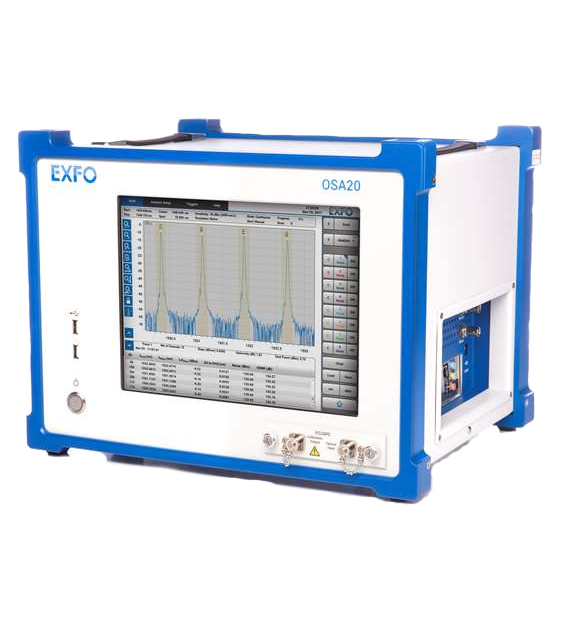OPTICAL SPECTRUM ANALYSER
Optical Wave Expert
DWDM Channel Checker and OTDR
The Optical Wave Expert integrates channel power validation and reflectometry characterization on a single port. This means that technicians can automatically identify faulty channels and follow through with fault location by leveraging intelligent OTDR capabilities.
The smart toggle to the OTDR mode is done automatically, without having to set any parameters. Technicians can now obtain instant channel power readings through an intuitive GUI and seamlessly benefit from tunable OTDR capabilities. The field-proven MaxTester platform provides a rugged and compact form factor that is purpose-built around practicality and efficiency.
The integration of channel checker and OTDR capabilities on a single port means less unnecessary manipulation of the optical fiber and improved field efficiency. This translates into faster mean-time-to-repair (MTTR) and makes the trial and error approach–which can disable nodes–obsolete.
OSA20
optical spectrum analyzer
The OSA20 is the only grating-based optical spectrum analyzer that combines state-of-the-art performance, ease of use, automation, top-shelf analysis tools and fast measurements. This makes it ideal not only for next-gen optical telecom network R&D but also for manufacturing of high-end products such as transceivers or ROADMs.
IQS-5240S-P BP
optical spectrum analyzers
OSNR has long been recognized as a key performance indicator in wavelength-division multiplexing (WDM) networks, because it provides a multichannel assessment of signal quality in a very short period of time. In addition, OSNR can predict bit error rate (BER) within just a few minutes, while typical BER tests must run for hours or days. The IEC 61280-2-9 standard defines OSNR measurement as the power ratio between the signal power and the noise at half the distance between the peaks. However, in ROADM or 40 Gbit/s systems, this method may lead to incorrect results, because the noise level between the peaks is no longer directly correlated with the noise level at the channel wavelength. EXFO’s in-band OSNR is the answer to this challenge. For Pol-Mux signals at 40G and 100G, neither the IEC nor the in-band method work. This calls for a new measurement method: Pol-Mux OSNR.


